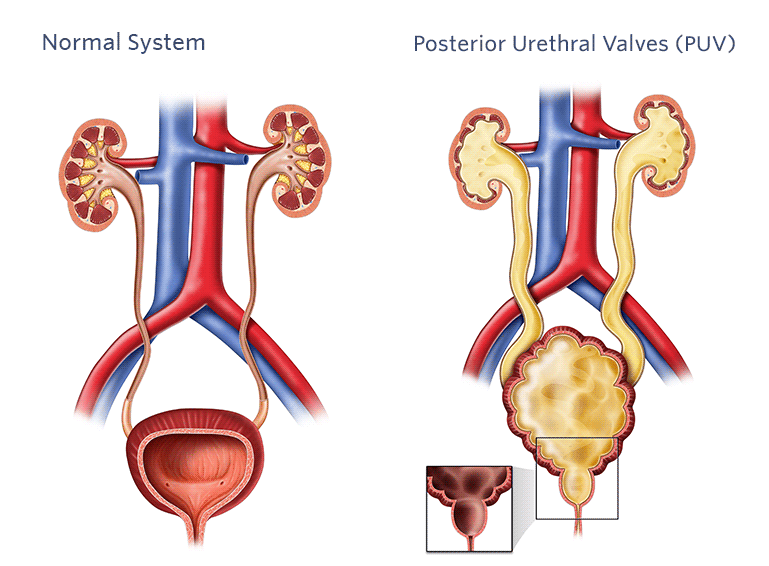
Introduction
Posterior Urethral Valves (PUV) is a congenital condition that affects the urinary system in male infants. This condition arises when flaps of tissue develop in the urethra, the tube responsible for carrying urine from the bladder out of the body. While a diagnosis of Posterior Urethral Valves can be overwhelming, understanding the condition and actively participating in your child's care can make a significant difference. The collaboration between you, your child, and the healthcare team is essential for a successful outcome. By staying informed, attending regular follow-up appointments, and addressing any concerns promptly, you can provide the best possible care for your child's health and well-being. Remember that each child is unique, and with appropriate medical attention, many children with PUV go on to lead healthy, fulfilling lives.
What causes Posterior Urethral Valves?
Posterior Urethral Valves occur during fetal development, and the exact cause is not always clear. These abnormal flaps of tissue in the urethra can obstruct the normal flow of urine, causing a range of problems. PUV is exclusively found in male infants and is a rare condition, affecting approximately 1 in 8,000 births.
Investigation
If there are suspicions or concerns about your baby’s urinary system, the healthcare team will conduct a series of tests to diagnose PUV. These may include:
01.
Ultrasound Imaging:
This non-invasive test uses sound waves to create an image of the baby’s urinary tract. It helps identify any blockages or abnormalities in the urethra or bladder.
02.
Voiding Cystourethrogram (VCUG):
This is a special X-ray procedure that involves injecting a contrast dye into the bladder through a catheter. It allows the healthcare team to visualize the structure and function of the urinary tract.
03.
Blood Tests:
Blood tests may be conducted to check for any signs of kidney dysfunction, as PUV can impact kidney function.
Treatment:
Once a diagnosis is confirmed, the healthcare team will discuss the treatment plan with you. Treatment for PUV typically involves surgical intervention to remove or correct the obstructive tissue. The primary goal is to restore normal urine flow and prevent further damage to the urinary tract and kidneys. The surgery is often performed soon after birth or shortly thereafter.
- Transurethral Valve Ablation: In this procedure, a tiny instrument is inserted into the urethra to reach the valves. Using a laser or electric current, the abnormal tissue is vaporized or cut away, allowing for improved urine flow.
- Vesicostomy: In some cases, especially if the baby is too small for valve ablation, a temporary opening called a vesicostomy may be created in the bladder that opens up on the lower belly. This allows urine to bypass the valves, reducing pressure on the kidneys. A more definitive surgery is usually planned once the baby is bigger and healthier.

Follow-up:
After the initial treatment, regular follow-up appointments are crucial to monitor your child's health and ensure proper development. Follow-up care may include:
1. Ultrasound Monitoring:
Regular ultrasound imaging will be performed to check the kidneys and bladder for any signs of issues.2. Blood Tests:
Periodic blood tests may be necessary to assess kidney function and detect any abnormalities.3. Urodynamic Studies:
These tests measure how well the bladder and urethra are functioning and may be conducted periodically to ensure there are no complications. They are done by placing a tiny catheter in your child's bladder to record the pressure generated by the bladder.4. Consultations with Specialists:
Your child may need to see a pediatric urologist or nephrologist regularly to address any specific concerns related to PUV.